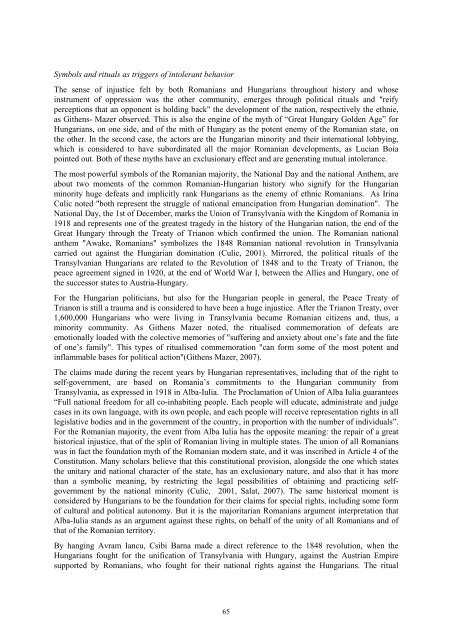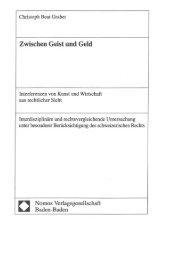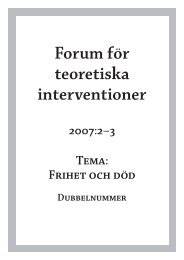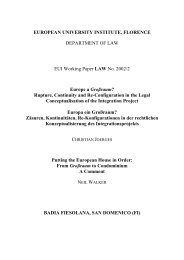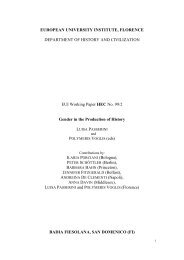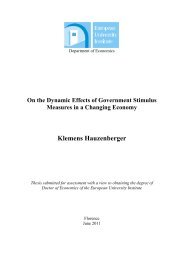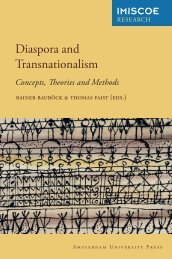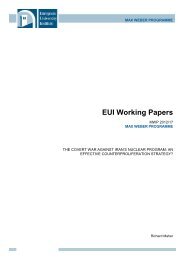Sinziana-Elena Poiana Ioana Lupea Irina-Madalina Doroftei Alina ...
Sinziana-Elena Poiana Ioana Lupea Irina-Madalina Doroftei Alina ...
Sinziana-Elena Poiana Ioana Lupea Irina-Madalina Doroftei Alina ...
You also want an ePaper? Increase the reach of your titles
YUMPU automatically turns print PDFs into web optimized ePapers that Google loves.
Symbols and rituals as triggers of intolerant behavior<br />
The sense of injustice felt by both Romanians and Hungarians throughout history and whose<br />
instrument of oppression was the other community, emerges through political rituals and "reify<br />
perceptions that an opponent is holding back" the development of the nation, respectively the ethnie,<br />
as Githens- Mazer observed. This is also the engine of the myth of “Great Hungary Golden Age” for<br />
Hungarians, on one side, and of the mith of Hungary as the potent enemy of the Romanian state, on<br />
the other. In the second case, the actors are the Hungarian minority and their international lobbying,<br />
which is considered to have subordinated all the major Romanian developments, as Lucian Boia<br />
pointed out. Both of these myths have an exclusionary effect and are generating mutual intolerance.<br />
The most powerful symbols of the Romanian majority, the National Day and the national Anthem, are<br />
about two moments of the common Romanian-Hungarian history who signify for the Hungarian<br />
minority huge defeats and implicitly rank Hungarians as the enemy of ethnic Romanians. As <strong>Irina</strong><br />
Culic noted "both represent the struggle of national emancipation from Hungarian domination". The<br />
National Day, the 1st of December, marks the Union of Transylvania with the Kingdom of Romania in<br />
1918 and represents one of the greatest tragedy in the history of the Hungarian nation, the end of the<br />
Great Hungary through the Treaty of Trianon which confirmed the union. The Romanian national<br />
anthem "Awake, Romanians" symbolizes the 1848 Romanian national revolution in Transylvania<br />
carried out against the Hungarian domination (Culic, 2001). Mirrored, the political rituals of the<br />
Transylvanian Hungarians are related to the Revolution of 1848 and to the Treaty of Trianon, the<br />
peace agreement signed in 1920, at the end of World War I, between the Allies and Hungary, one of<br />
the successor states to Austria-Hungary.<br />
For the Hungarian politicians, but also for the Hungarian people in general, the Peace Treaty of<br />
Trianon is still a trauma and is considered to have been a huge injustice. After the Trianon Treaty, over<br />
1,600,000 Hungarians who were living in Transylvania became Romanian citizens and, thus, a<br />
minority community. As Githens Mazer noted, the ritualised commemoration of defeats are<br />
emotionally loaded with the colective memories of "suffering and anxiety about one’s fate and the fate<br />
of one’s family". This types of ritualised commemoration "can form some of the most potent and<br />
inflammable bases for political action"(Githens Mazer, 2007).<br />
The claims made during the recent years by Hungarian representatives, including that of the right to<br />
self-government, are based on Romania’s commitments to the Hungarian community from<br />
Transylvania, as expressed in 1918 in Alba-Iulia. The Proclamation of Union of Alba Iulia guarantees<br />
“Full national freedom for all co-inhabiting people. Each people will educate, administrate and judge<br />
cases in its own language, with its own people, and each people will receive representation rights in all<br />
legislative bodies and in the government of the country, in proportion with the number of individuals”.<br />
For the Romanian majority, the event from Alba Iulia has the opposite meaning: the repair of a great<br />
historical injustice, that of the split of Romanian living in multiple states. The union of all Romanians<br />
was in fact the foundation myth of the Romanian modern state, and it was inscribed in Article 4 of the<br />
Constitution. Many scholars believe that this constitutional provision, alongside the one which states<br />
the unitary and national character of the state, has an exclusionary nature, and also that it has more<br />
than a symbolic meaning, by restricting the legal possibilities of obtaining and practicing selfgovernment<br />
by the national minority (Culic, 2001, Salat, 2007). The same historical moment is<br />
considered by Hungarians to be the foundation for their claims for special rights, including some form<br />
of cultural and political autonomy. But it is the majoritarian Romanians argument interpretation that<br />
Alba-Iulia stands as an argument against these rights, on behalf of the unity of all Romanians and of<br />
that of the Romanian territory.<br />
By hanging Avram Iancu, Csibi Barna made a direct reference to the 1848 revolution, when the<br />
Hungarians fought for the unification of Transylvania with Hungary, against the Austrian Empire<br />
supported by Romanians, who fought for their national rights against the Hungarians. The ritual<br />
65


